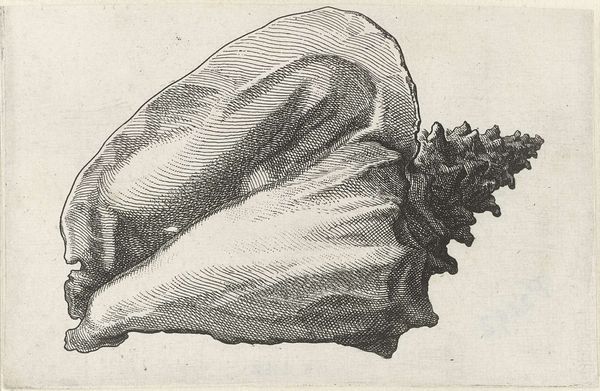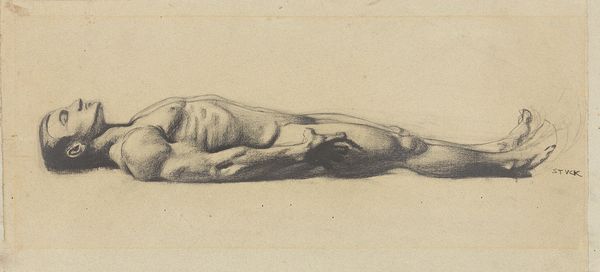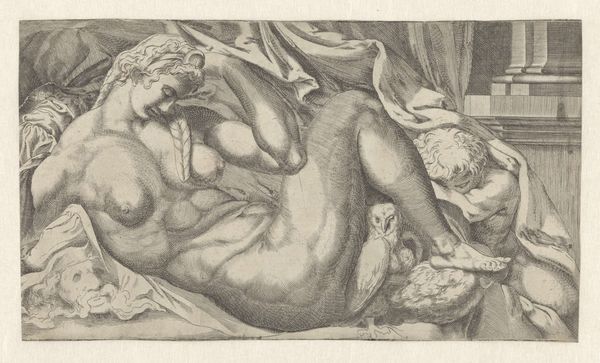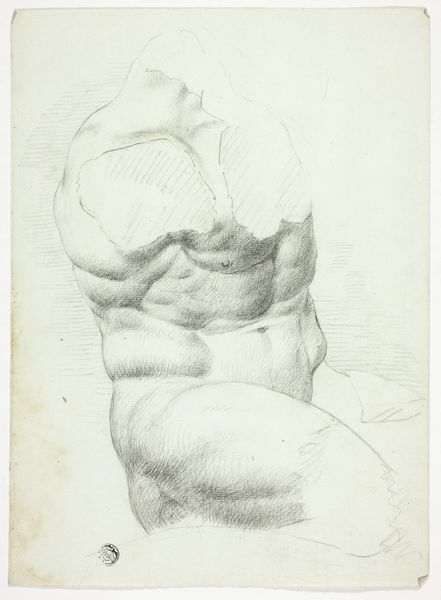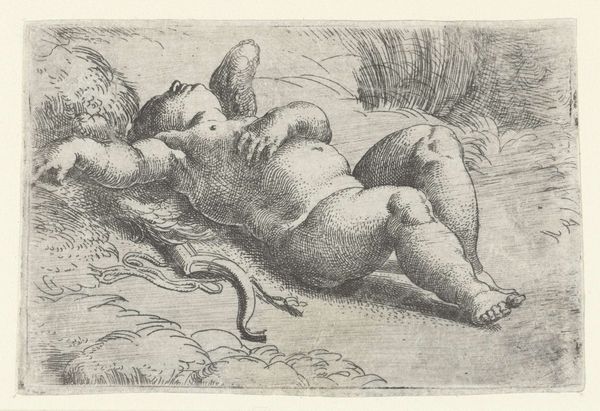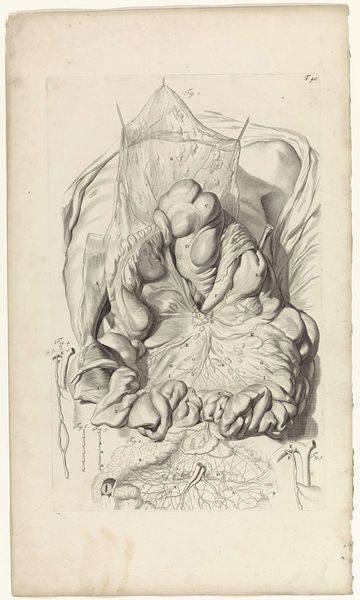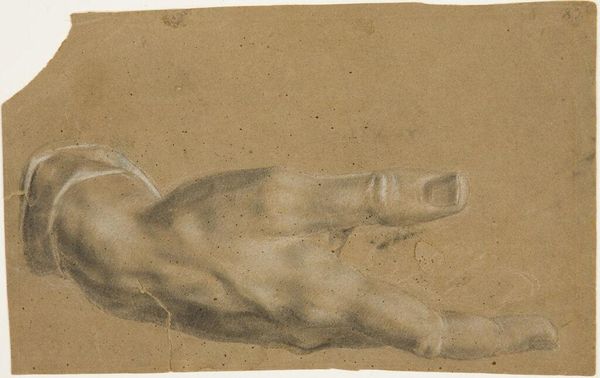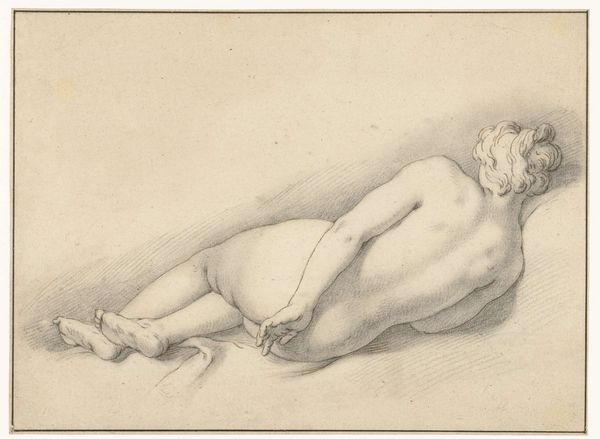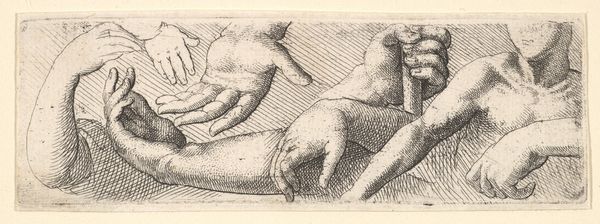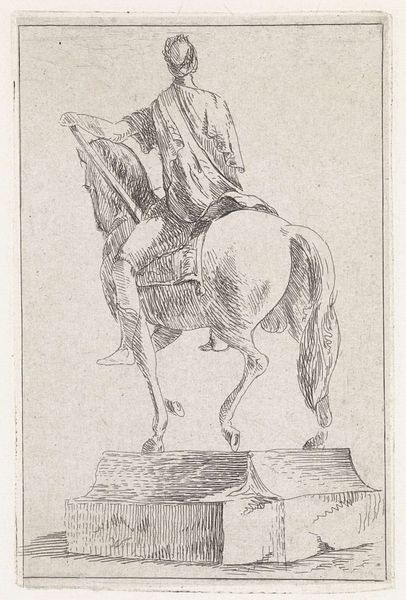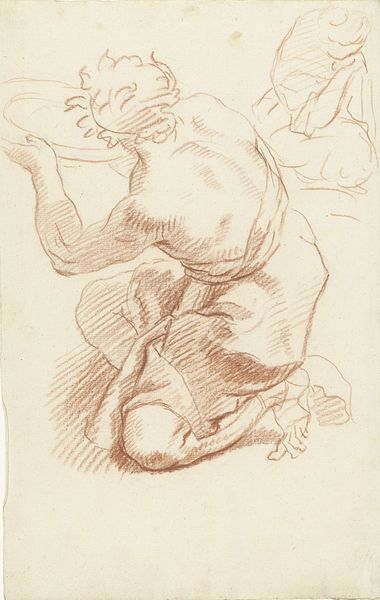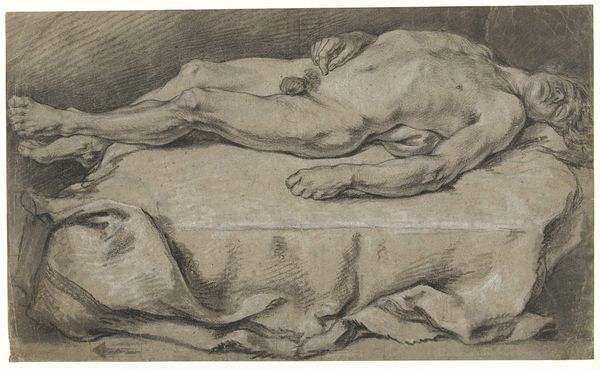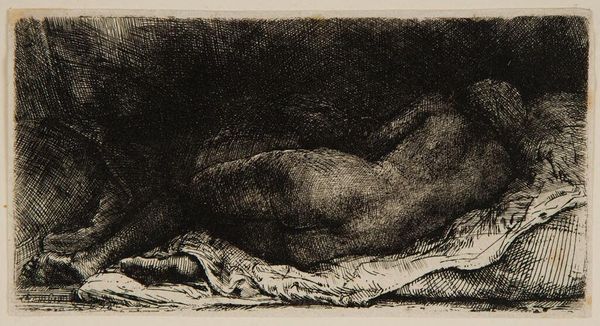
print, engraving
#
baroque
# print
#
figuration
#
history-painting
#
academic-art
#
engraving
Dimensions: height 47 mm, width 121 mm
Copyright: Rijks Museum: Open Domain
Curator: This detailed engraving, currently held in the Rijksmuseum, is titled "Opengesneden lichaam van een kind met een open rug," or "Open cut body of a child with an open back." It's estimated to have been created sometime between 1617 and 1727 by an anonymous artist. Editor: Well, the initial impact is certainly arresting. There’s a cold, detached quality to the draftsmanship; the meticulous lines seem focused on rendering anatomy as… geometry almost. Curator: Precisely. As an example of academic art firmly rooted in the Baroque style, this work presents the body as an object of study. Note the unwavering line work detailing the open spinal column, all meticulously engraved. We can think about its role perhaps within medical or scientific communities of the time. Editor: True, but there’s an unavoidable pathos, wouldn't you say? A tension between clinical observation and the inherent vulnerability of the human form, especially that of a child. One has to wonder what social climate permitted the creation—and the viewing—of such an image. Curator: The creation of this sort of work does sit at a fascinating juncture. The intersection of medical science, artistic rendering, and perhaps even moral commentary creates a rich interpretive field. Consider that engravings allowed for wide distribution. Were these images for education, a stark visual lesson on consequence, or something else entirely? Editor: Or were they aimed at the growing bourgeoisie with a taste for spectacle? There's a sense of drama conveyed despite its clinical precision, with that stark light defining form so ruthlessly. I wonder if the intended viewer thought less of medicine and more about morbidity. Curator: It’s a potent reminder of how closely intertwined art, science, and societal attitudes can be. Each carefully etched line provides a layer of meaning, revealing more about not only the anatomical subject but also the values and practices of the period in which it was created. Editor: Yes, even the absence of an identified creator speaks volumes about how the creation was probably situated inside an institutional framework, the artwork almost serving the function of data. It gives the composition itself a sense of almost brutal directness. Curator: I agree. Thank you for that poignant insight.
Comments
No comments
Be the first to comment and join the conversation on the ultimate creative platform.
